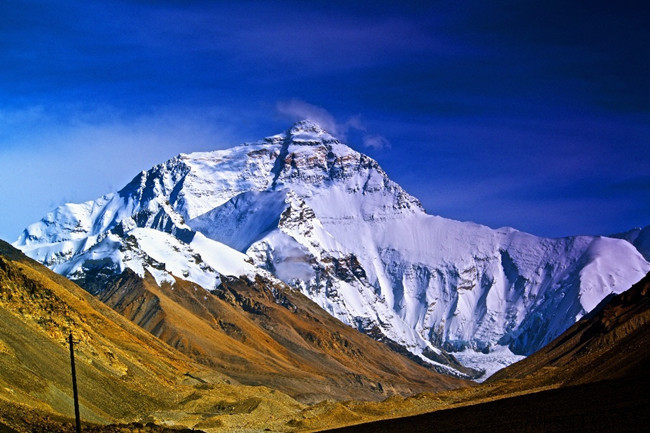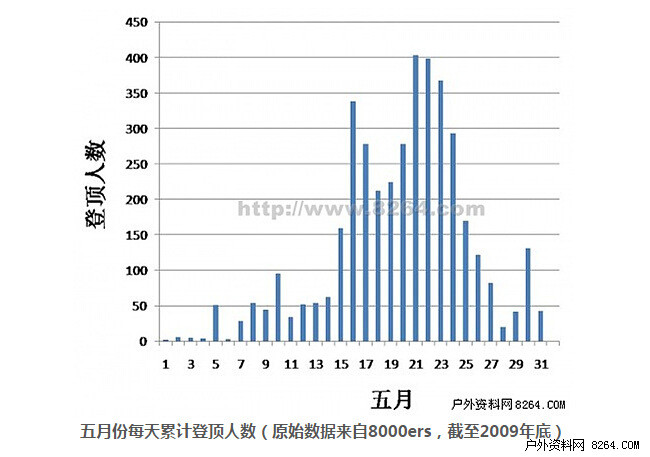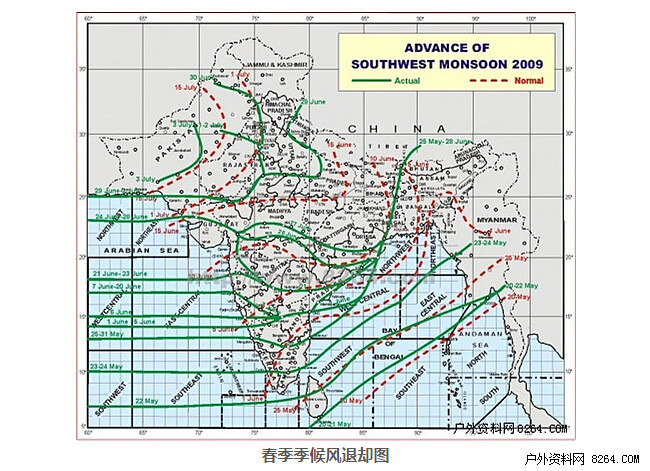Why do you need to wait for the "peak window" when climbing Everest?
2022-08-09 11:06:41
This week, as many teams started Everest climbing, the word “Peak Window†was frequently mentioned. What exactly does the “Peak Window†mean, and why do climbers need to wait for the top window before they have the chance to summit? Let's understand together:

Due to the difference in heat capacity between the mainland and the ocean, the surface temperature after sun exposure varies. The temperature of the ocean in winter is higher than that of the mainland, and the continental temperature in the summer is higher than the ocean. As the hot air rises, the cold air will be replenished from the side, so the seasonal temperature difference between the ocean and the mainland will cause the monsoon blown from the mainland to the ocean in the winter and from the ocean to the mainland in the summer. At an altitude of 8,000 meters, the monsoon is unobstructed and very strong. It is generally not suitable for mountaineering. Only during the spring and autumn seasons when the monsoon shifts, there will be a short period of low winds for a few days at high altitude. These days are the summit window of the Himalayas.
For example, Everest is the rainy season of Everest every year from early June to mid-September. The strong southeast monsoon causes frequent heavy rain, clouds and fog, and ice and snow are raging at the impermanent and bad weather. In mid-November in mid-November, due to the strong northwest cold current, the temperature can reach -60°C, the average temperature is between -40°C and -50°C, and the maximum wind speed can reach 90m/s. From the beginning of March to the end of May each year, it is the spring of the gusty season to the rainy season, and from the beginning of September to the end of October, it is the rainy season that has been excessive to the autumn of the season. During this period, there may be better weather and it is the best season for climbing.
Relatively speaking, several 8,000-meter peaks, such as Mount Everest and Dhaulagiri, are suitable for climbing in the spring, while several 8,000-meter peaks such as Cho Oyu and Kishabanga are more suitable for the autumn.
For Mount Everest, when should we reach the top? Mount Everest is located on the China-Nigeria border, with the Indian mainland on the south and the Bay of Bengal on the east. So roughly speaking, when the continental cold air over the Bay of Bengal began to retreat northwards in May, it was the day when the Mount Everest peaked. Because the movement of the high and low pressure interfaces is often accompanied by the formation of a spiral flow of air, once the spiral air flow over the Bay of Bengal has formed and there is a sign of northward shift, it is the signal of the summit of Mount Qomolangma. The time is too early, and the monsoon has not stopped; it is too late and the monsoon shift has been completed, and it is not suitable for summit. This time window is usually a few days to ten days, and most of the summits of the Mount Everest are completed in this window (Figure 1).

India is an ancient civilization, and agriculture has a large share in its history. Since agriculture depends on heaven for food, and the monsoon directly affects the annual rainfall in India, India’s accumulated knowledge of the monsoon over the years has been perfect. The following figure shows the spring monsoon retreat released by India. It can be seen that in general, the monsoon over the Bay of Bengal began to recede around May 20, which is why most of Everest's summit was completed in this time window.

The red line is the average result over the years, and the green line is the result for 2009. The summit window of Everest in 2009 is May 19-23, and it is the occasion when the monsoon begins to retreat northwards.
The specific time window of each year will change from time to time, and there will often be a small window of time in early May. Although the development of satellite monitoring technology has greatly assisted in weather forecasting (in fact, most of the mountaineering leaders are weather forecasting from Switzerland), satellite technology can only predict the arrival of snowstorms, and it has a specific time and scale for arrival. Certain errors. Therefore, the final judgment based on satellite technology and the specific climate in the mountains is a touchstone for testing the level of the mountaineering leader.
Diy Foot Scrub,Homemade Foot Scrub,Best Foot Scrub,Peppermint Foot Scrub
Ningbo Roni Cosmetic Co,.Ltd , https://www.ronicosmetics.com